Agility and precision are paramount in market research. As researchers strive to deliver deeper, faster, and more actionable insights, many are considering client-provided customer samples as an alternative to traditional panel recruitment. While these samples offer advantages, they also carry important caveats.
This article explores the strategic value and limitations of using client-provided samples in research studies—and how to navigate this trade-off effectively.
Direct Access & Real Advantages
Client-provided samples offer direct access to individuals who are already engaged with the brand, service, or product. This often translates into:
• Higher relevance: Respondents are actual users or prospects, ensuring a tight fit between the sample and study objectives.
• Lower screening failure rates: Reducing waste and shortening the fielding timeline.
• Higher Data Quality: Respondents often provide more accurate and insightful feedback since they are familiar with the brand, product, or service.
• Segmentation Flexibility: Pre-existing customer data (demographics, purchase history, loyalty tier, etc.) enables richer audience segmentation and personalized insights.
• Cost Efficiency: By tapping into an existing contact list, researchers can avoid third-party panel fees and lengthy recruitment cycles. For clients with budget constraints, this can be a game-changer in executing high-quality research at scale.
• Enhanced Engagement: Since customers already recognize the brand, survey invitations are more likely to be trusted, leading to higher open rates, participation, and engagement.
• Data Enrichment Opportunities: With proper consent and data governance, client samples can be enriched by linking to transactional or CRM data, enabling nuanced analysis such as comparing stated sentiment against actual behavior.
Hidden Risks & Real Constraints
Despite these advantages, several challenges require attention. Perhaps the most notable risk is sample bias: active customers may be overrepresented, while lapsed, disengaged, or competitor customers are typically absent from the frame. This can undermine generalizability, especially for market sizing or brand health tracking studies.
Using a client’s database introduces regulatory responsibilities such as compliance with GDPR, CCPA, and other regulatory laws. Informed consent, opt-out mechanisms, and secure data handling must also align with standards.
Another risk is over-surveying. When client databases are used heavily across functions, response rates can decline, relationships can suffer, and survey quality may erode due to respondent burnout.
Finally, operational hurdles such as delays in pulling or cleaning sample lists and lack of full contact information and segmentation variables can also impact execution and fielding timelines.
More Than a Logistical Choice
Client-provided samples can be a strategic asset in market research—one that can yield faster, more targeted, and more cost-effective insights when used thoughtfully. But they are not a one-size-fits-all solution. By understanding the trade-offs and applying best practices, researchers can unlock their full value without compromising rigor, privacy, or customer experience.
As with any methodology, the key is intentional design and transparent collaboration. In a world where every insight counts, making the right sampling decision is more than a logistical choice—it’s a strategic one.
About KS&R
KS&R is a nationally recognized strategic consultancy and marketing research firm that provides clients with timely, fact-based insights and actionable solutions through industry-centered expertise. Specializing in Technology, Business Services, Telecom, Entertainment & Recreation, Healthcare, Retail & E-Commerce, and Transportation & Logistics verticals, KS&R empowers companies globally to make smarter business decisions. For more information, please visit www.ksrinc.com.


